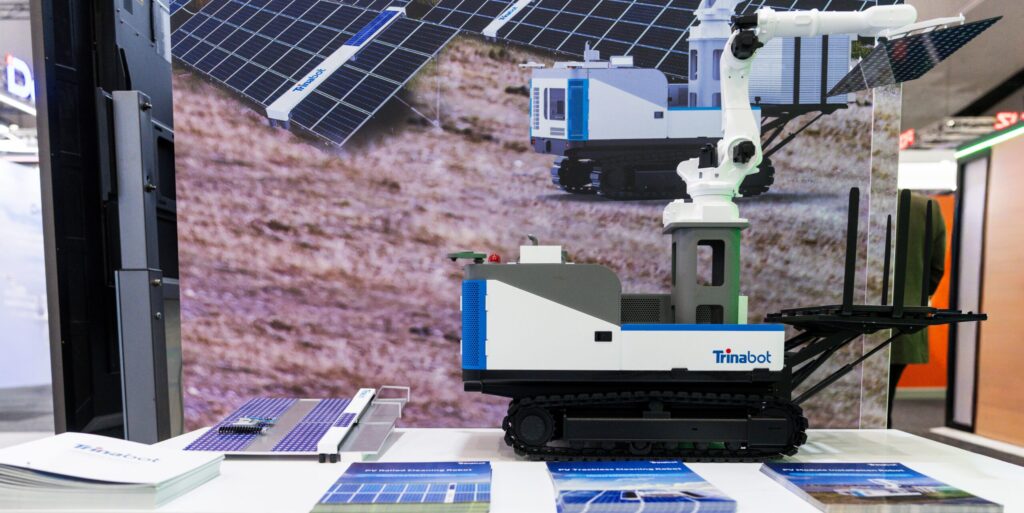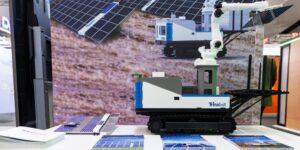
The Chinese solar manufacturer, Trinasolar, is set to trial its robotic solar panel installation technology, known as the Trinabot, in Australia. The initiative aims to secure a grant from the Australian Renewable Energy Agency (ARENA) to support this innovative project. This development follows the trend of robotic technologies in solar installations, with other companies like Luminous and Leapting already testing similar machines in the region.
During the All Energy conference held in October 2023, Edison Zhou, the Group Director for Trinasolar ANZ and Pakistan, emphasized the importance of these advancements. He stated, “We want to bring new technology, high efficiency panels, the Elementa 3 which is our new [utility scale] battery, and the installation robot… to help developers not just reduce the manufacturing cost, but also the total system cost.”
The Trinabot is currently operational in numerous projects across China. Trinasolar is collaborating with a local contractor to apply for funding from ARENA, aiming to conduct a pilot project in Australia. ARENA is enthusiastic about supporting such trials as part of its objective to lower the cost of large-scale solar energy production to below $20 per megawatt hour. Recently, the agency allocated $45 million to Fortescue to explore up to ten novel solar technologies in the Pilbara region.
Other technologies supported by ARENA include automated pile-driving rigs being tested by Nextracker at various solar sites in Australia. These innovations are becoming increasingly critical as the downward trend in solar panel prices appears to have stabilized, with expectations of rising module costs in the near future.
Leapting has reported that its solar panel installer can perform the work typically done by four human workers. According to Trinasolar’s Andrew Percival, the Trinabot could enhance a project’s economic viability by as much as 30 percent, contingent on the specific site and conditions. “It changes the efficiency level and improves the economic value of a project by potentially up to 30 percent… The idea is that we’re not trying to change how much labour is involved, but streamline the labour,” he explained.
The push for robotic installation technologies is driven by the high cost of labor in Australia and a shortage of skilled workers. These challenges, compounded by the remote and often harsh environments where large solar projects are developed, have made robotic solutions increasingly attractive for contractors looking to expedite project timelines.
As the renewable energy sector continues to evolve, the integration of robotics into solar installations represents a significant step towards more efficient and cost-effective energy solutions. The Trinabot trial could pave the way for broader adoption of similar technologies, ultimately contributing to the growth of the solar industry in Australia and beyond.
For those interested in staying updated on developments in clean energy, subscribing to daily newsletters could provide valuable insights and news directly to their inbox.







